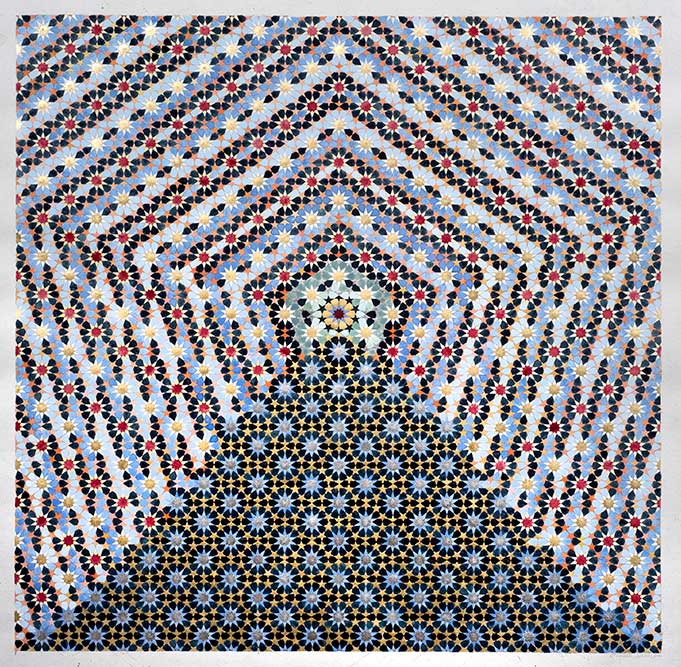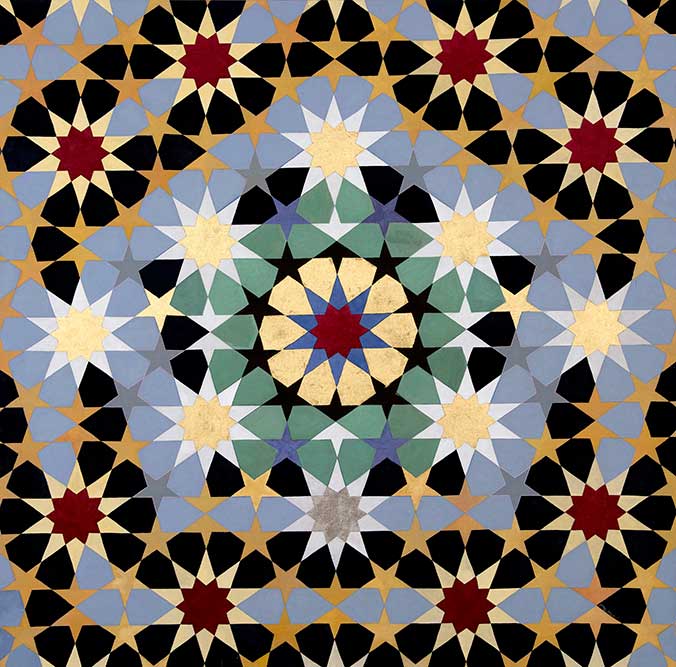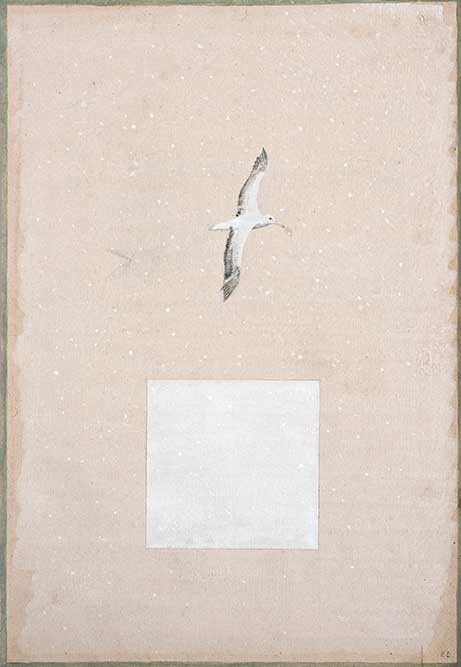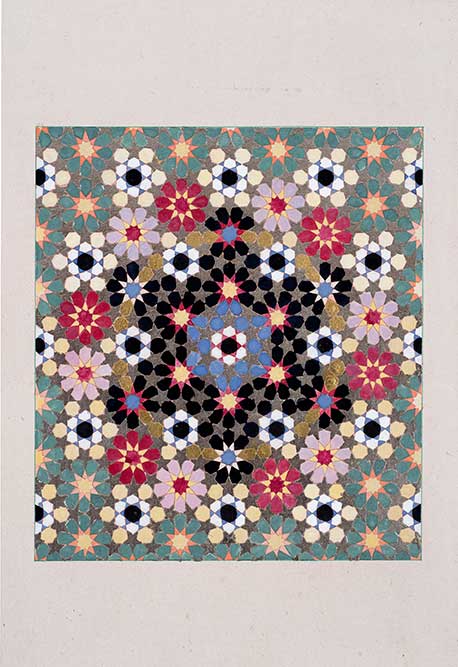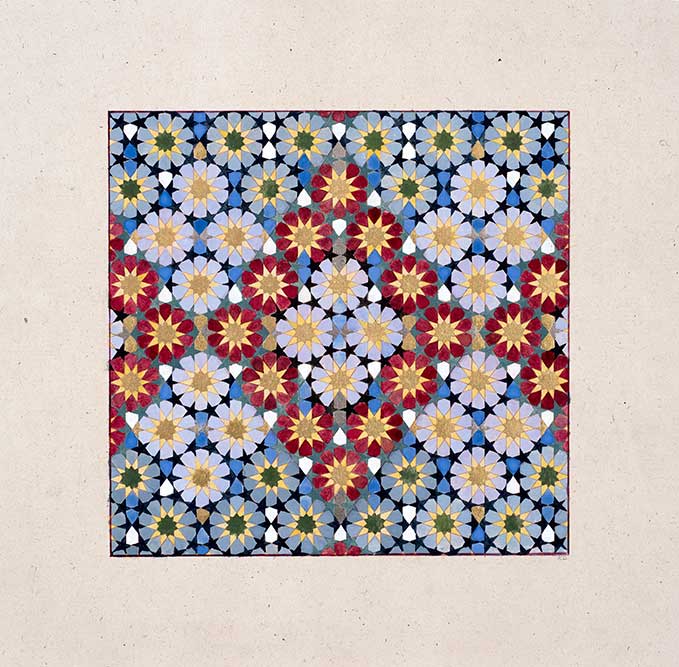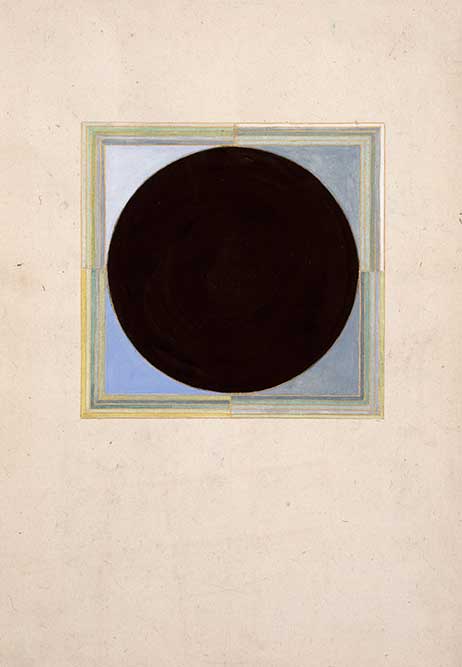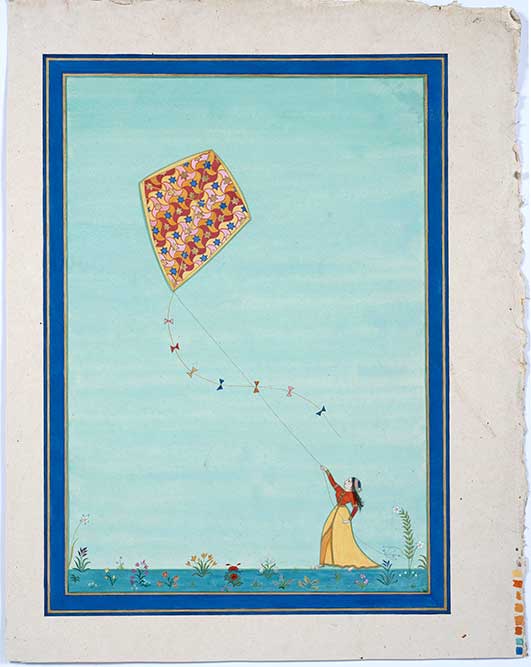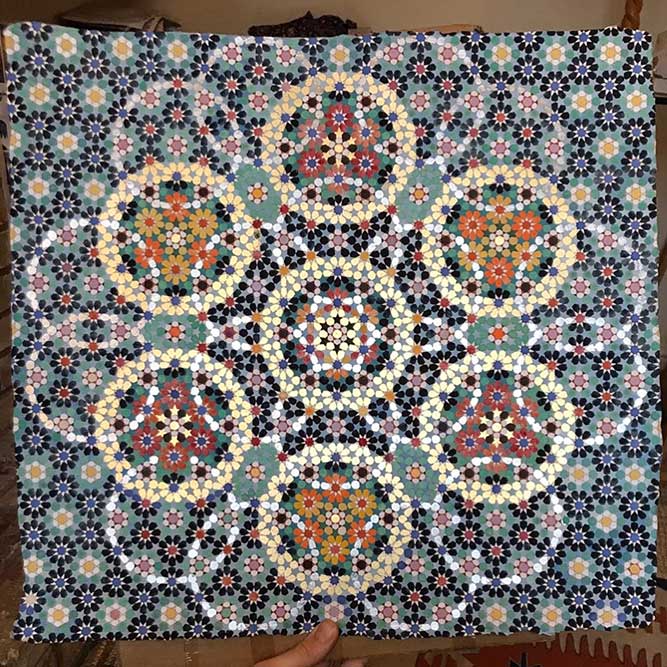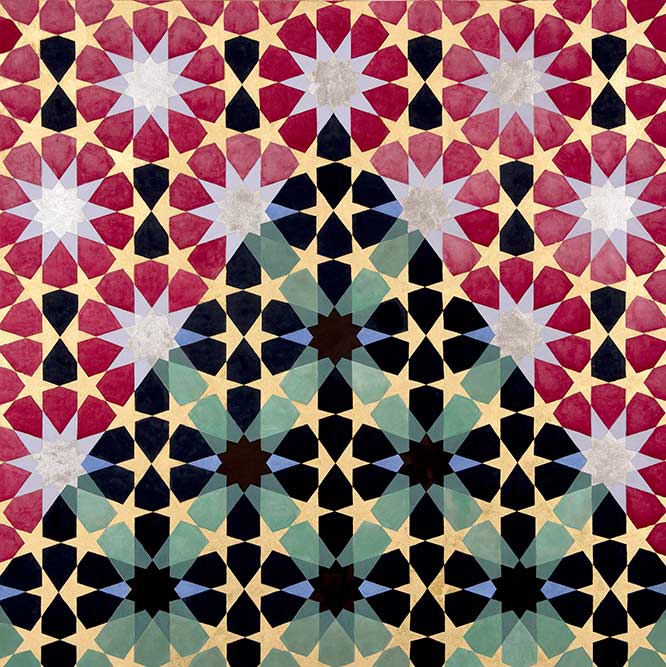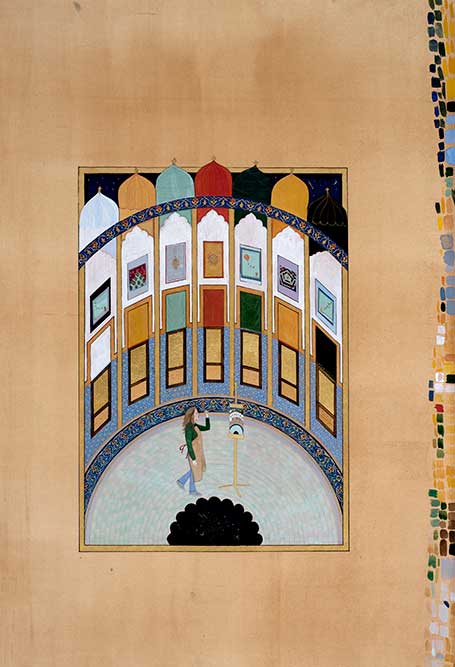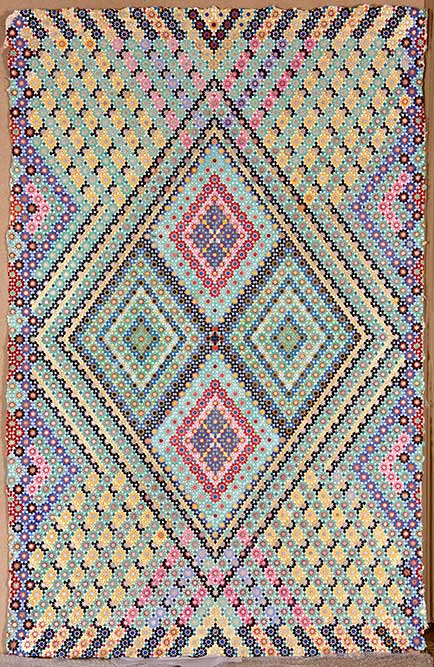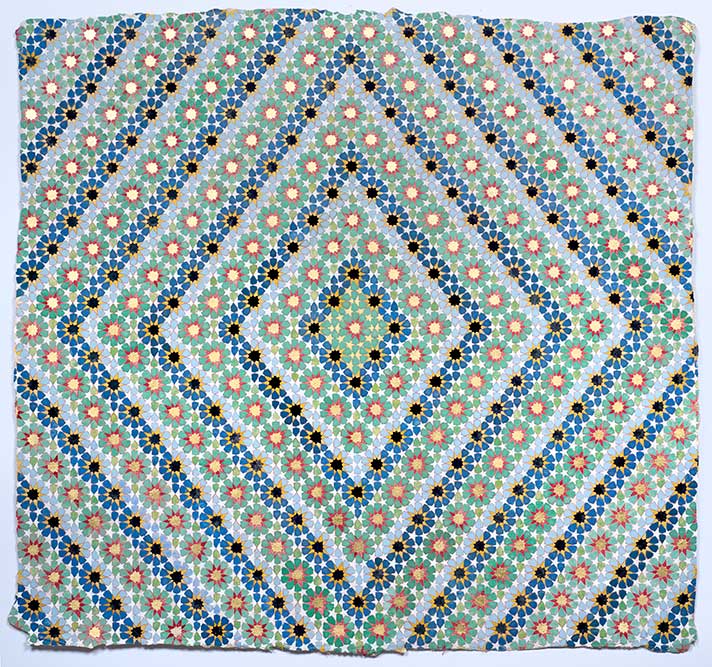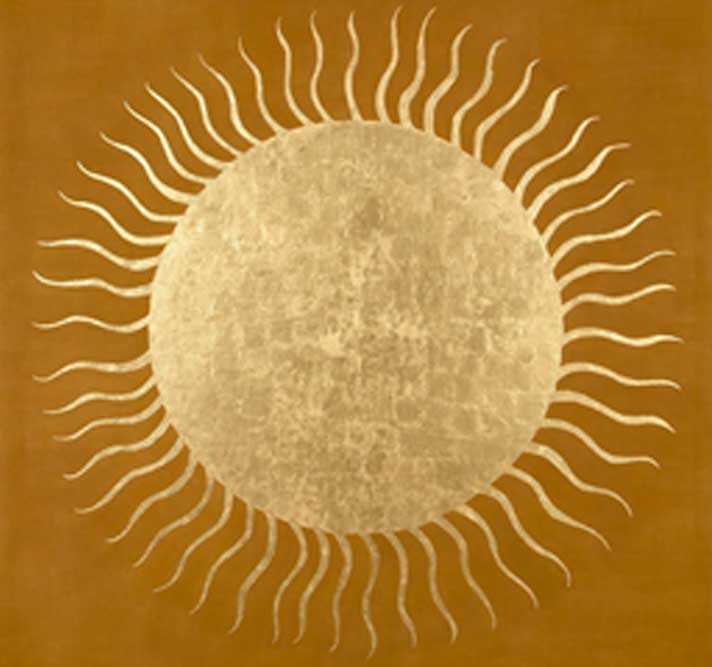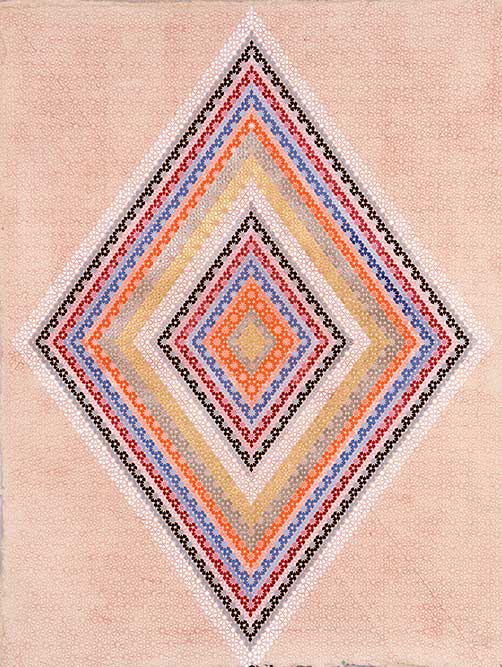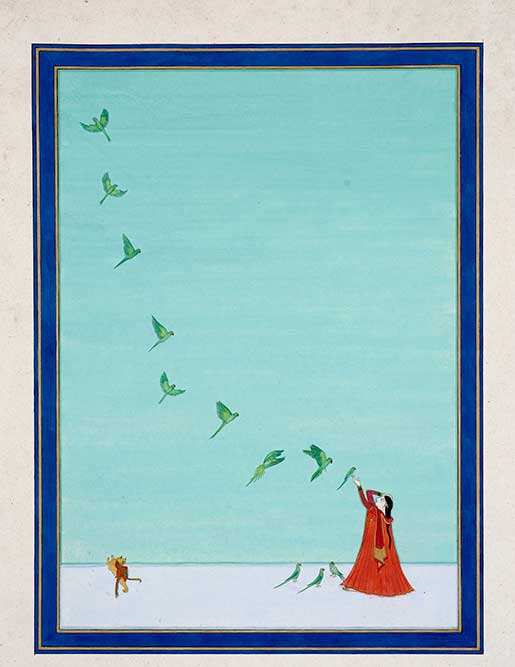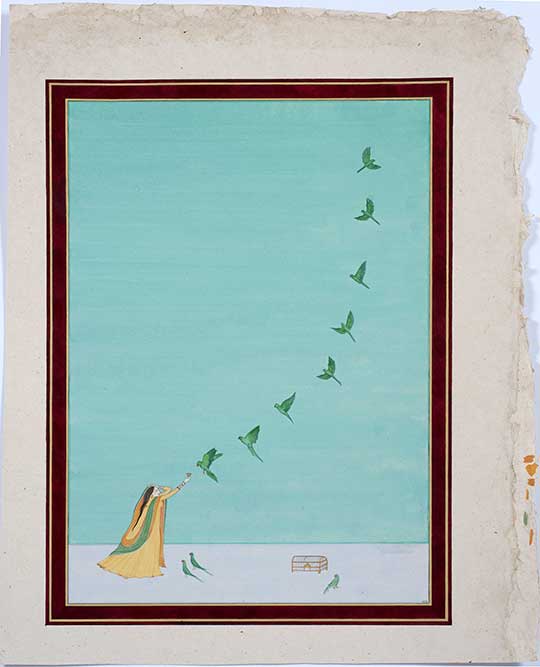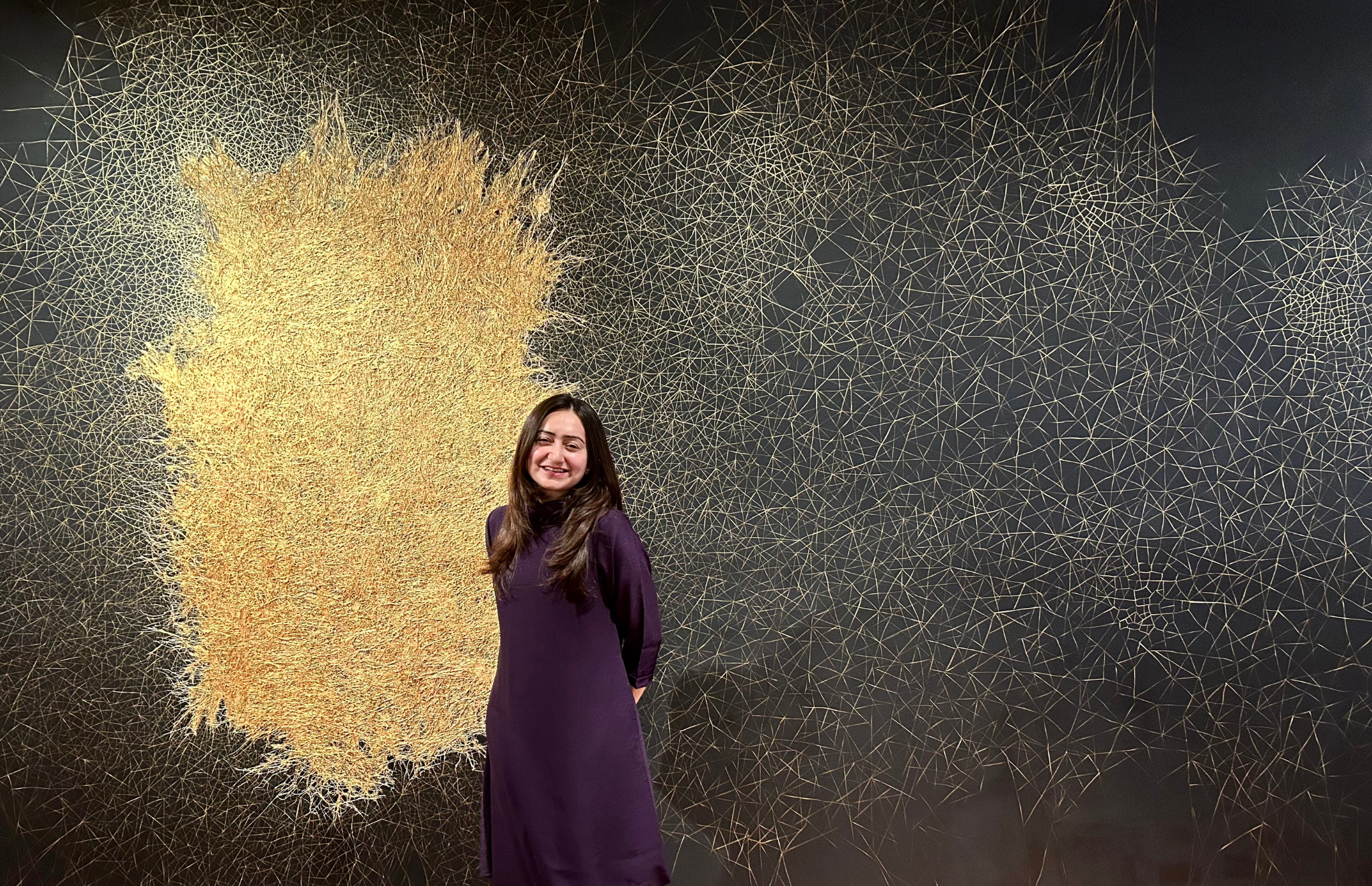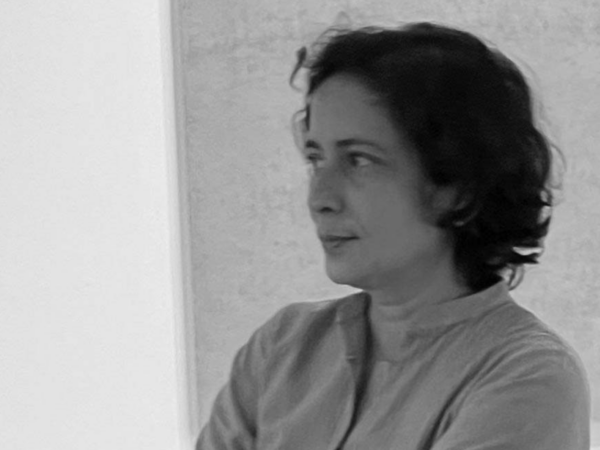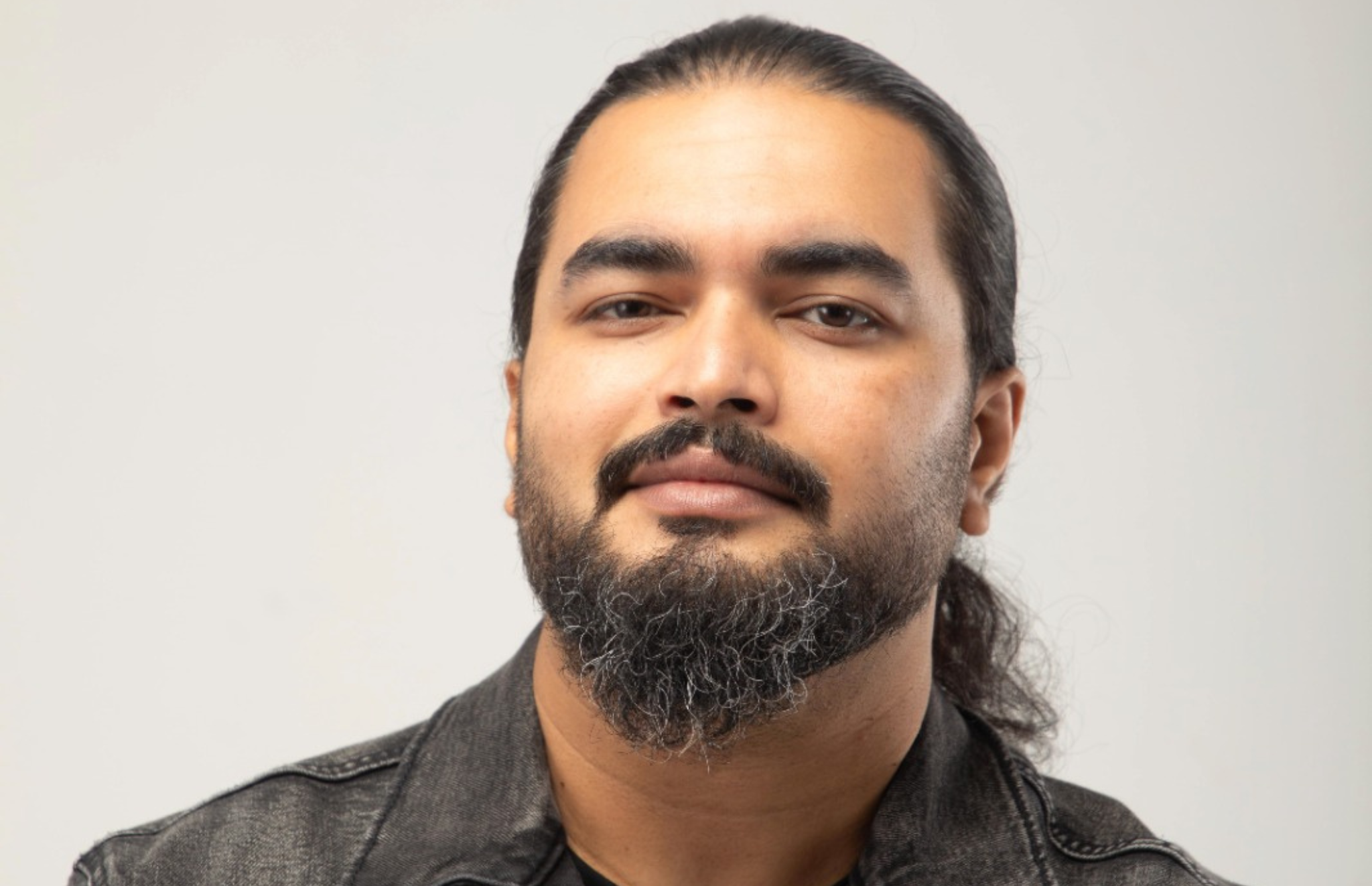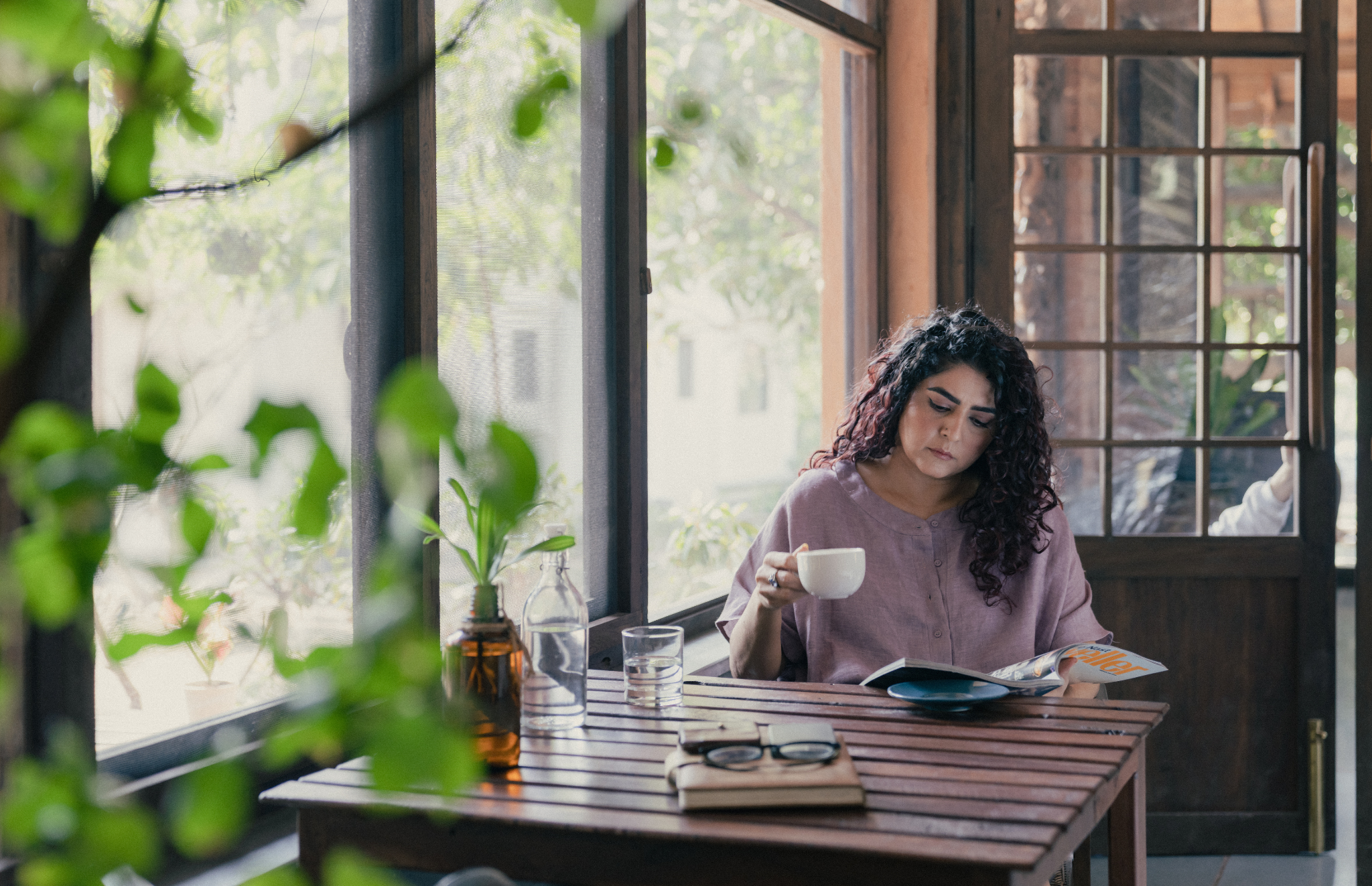British painter Elisabeth Deane’s love of Indian miniature painting was born in 2011 on a trip to Santiniketan in West Bengal. Her work is a mix of rigid geometry and flowing figurative work, drawing from sources as varied as Persian and Indian miniatures and folklore to Islamic geometry.
SP: Could you tell us a little bit about your educational and artistic background?
ED: As an artist, I found my feet at The Prince’s Foundation School of Traditional Arts where I completed an MA in 2017. I read History of Art (BA), and the Arts of Africa, Oceania, and the Americas (MA) at the University of East Anglia and also did a teaching qualification, a PGCE in Art & Design at the University of Cambridge. It was, however, during my time at the Prince’s School that I felt that all of my previous experience came together and made sense. Now that I am working as a professional artist, my art history background has given me a mental archive of images and ideas to explore further.
SP: You use traditional tools and techniques that arise from conventional Indian and Iranian practices. Was there a particular experience that inspired this for you?
ED: My first trip to India was to Santiniketan, West Bengal in the monsoon season. While there, I went to visit the Kala Bhavana (Institute of Fine Arts) founded by Rabindranath Tagore. Although I couldn’t pinpoint exactly how it was going to take shape, I felt this burst of excitement that I had found something that would shape my life. I distinctly remember walking back to my lodgings that day, through the glades of mango trees feeling inexplicably buoyant.
My second trip to India included a trip to Udaipur, the beautiful city of the lakes. There I met a Master miniature painter – Sanju Soni – who introduced me to miniature painting. It was then that I became bewitched by the fine lines of the squirrel hairbrush and the sheer calm, focus, and precision needed to wield one. It felt akin to watching a martial artist. It was this particular afternoon that germinated the seed of my journey eventually leading me to enroll at The Prince’s School.
SP: What is your creative process like when painting?
ED: There are lots of different stages to the creative process even during the actual painting stage. It takes different forms according to what ‘mode’ I’m in. Here are some examples:
Incredibly focussed detailed brushwork (such as faces or the wings/beak of a bird), usually using a magnifying lamp: During this time, I cannot focus on anything except my work. Even listening to music can be a distraction. I sometimes find repeating prayers or mantras can help with flowing linework – oh, and remembering to breathe! This can be a difficult mental space to reach depending on what else is happening that day (or how much caffeine has been consumed), but it is definitely the most rewarding part of the process. Once this flow state is attained, it can be blissful.
Beginnings: It’s often the early stages of a painting that I find the most difficult and also the most exciting. One of my favorite stages is color mixing and testing. This process usually involves color filling some bigger areas of a painting. I love this part of the process – often exciting things happen when I trust my instincts and focus on technical application. Because I use natural pigments and particularly love the mineral colors lapis lazuli, malachite and cinnabar (which have heavy particles causing the paint to separate), applying these colors to large areas can be quite technically demanding.
SP: How do you synthesize the notions of abstraction and ambiguity with geometry and specificity in your art?
ED: The exactitude of geometry is a good foundation upon which to build more intuitive color arrangements. The dichotomy between the two interests me. It is a balance between science and the soul. As Kandinsky put it:
“Colour directly influences the soul. Colour is the keyboard, the eyes are the hammers, the soul is the piano with many strings. The artist is the hand that plays, touching one key or another purposively, to cause vibrations in the soul.”
– Wassily Kandinsky, Concerning the Spiritual in Art
SP: Your latest exhibition, “Aspects of Geometry” was at Grosvenor Gallery, London. How did it go?
ED: “Aspects of Geometry” was initially supposed to be part of Art Dubai 2020, yet owing to the pandemic it was relocated to London. It was due to open just as the world went into lockdown… so, it didn’t turn out quite as expected and ended up happening online. I was, however, very excited to be part of this group show because I was exhibiting work alongside artists I admire – Rasheed Araeen, Wardha Shabbir, and Mohammad Ali Talpur. In terms of sales it went incredibly well (especially given the uncertain nature of the world) yet I am sad that my work never made it to Dubai. One day soon – hopefully!
SP: What do you love about teaching your workshops? Is there any particular skill you hope your students gain in your workshops?
ED: I have been very lucky to have had the opportunity to teach young people from all over the world at various points in my career. I love learning from my students – I love learning about their lives and cultural experience. The act of teaching really helps me to consolidate knowledge as well as see where the gaps are. Not a skill exactly but I hope to ignite a pursuit of further creative work in my students and I am passionate about keeping traditional crafts alive. I have come to believe that the most important life skills are open-mindedness and a non-judgmental attitude towards people and cultures and this is something I would like to pass on.
SP: How would you say your art has changed over the years?
ED: It’s been a steep learning curve. I honed my craft at The Prince’s School which gave me the tools to really push my work creatively. Right now, I am in the early stages of my career and it’s very exciting! Working towards my solo show ‘Rhythmic Measures’ (2019) at Grosvenor Gallery has given me the confidence to push myself creatively. The summer light is still here and I feel so motivated to see what I can do and what will happen next. The creative process is a rollercoaster but I have learned to trust in this process.
SP: What advice would you give to your younger self?
ED: Realize your nature (i.e. your inherent inclinations towards certain activities over others) and work (and play) in line with them. Surround yourself with people who are doing the kind of work that you aspire to do. Do yoga (consistently) for both physical health and mental fortitude. Trust that all professional experience is relevant. Find practical courses that are in line with your artistic goals.
SP: What have you been working on recently? How has the pandemic affected your work?
ED: I have recently been working on some small paintings inspired by Tantric drawings using lots of tiny squares. I do, however, work on multiple pieces at the same time so these small paintings have been happening alongside some larger works. Lockdown was initially a moment to recuperate from losing my grandmother, moving house (and studio!), and working hard for the “Aspects of Geometry” show. In its earliest days, I took the opportunity to read, practice yoga, and study yogic philosophy which I feel may play into painting ideas at a later date. Lockdown felt like the age of the online interview, Zoom conference, and virtual private view. Once we (my husband artist Jethro Buck and I) found a studio, lockdown life opened up. It was such a release. The pandemic hasn’t affected my work in an obvious way but lockdown life reminded me to take time to allow my ideas to gestate.
SP: What’s your vision for the future?
ED: I hope to bring the viewer of my work joy and a sense of peace. When I make paint, it is a labor-intensive process, however; hand-ground, handmade paint has a vibrancy that is unparalleled by industrial made paint. As we know from the industrial mass-production of much of our food and clothing, our connection to the source of an item or product is often lost, disconnecting us from the meaning and labor inherent in it. Sourcing rocks and grinding rocks is a labor of love – the process gives in return. With this in mind, my vision for the future would include more ‘ labors of love’, reconnecting us to ourselves, our local communities, and our shared planet. In the midst of the devastation of the pandemic, I think many of us have been re-thinking our priorities and feeling appreciation for the small and beautiful in life. A lot of my work is about ‘being present’ so I hope for a future in which we are collectively in touch with how small, daily decisions can have lasting impacts on ourselves, our health and the wider community. I envisage a future in which we really listen, act with conscious intention, take responsibility (on a wider scale), and act respectfully. My vision for the future is full of color.
Image Courtesy: Elisabeth Deane
Find out more about the artist:
https://elisabethdeane.com/artworks/geometry/
https://elisabethdeane.com/artworks/abstract/
https://elisabethdeane.com/artworks/miniature/
https://www.grosvenorgallery.com/exhibitions/238-rhythmic-measures-elisabeth-deane/overview/


